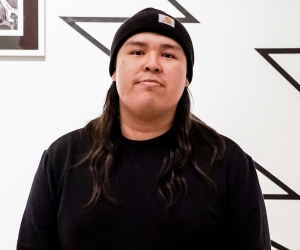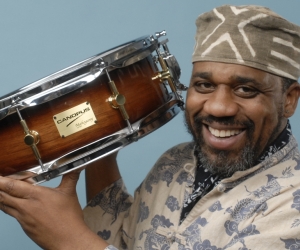
“For me, there is a kind of stillness in music that comes from a generous and welcoming place. It has nothing to do with speed or style or tradition or school. It can come from dark or light, from any shade of intensity. It doesn’t need to express anything at all. I love it when music has that stillness. It gives me freedom to experience it on my own terms.”
As a graduate student at the University of Victoria in the early 1980s, Mark Ellestad envisaged a future devoted to composition. The stimulating company and practical support Ellestad found in and around the university have been of enduring importance to him. There he met composers John Abram, Martin Arnold, and Allison Cameron, who became his close friends, as did the late Doug Collinge, who was then teaching in the university’s electronics lab. Through them he also got to know Stephen Parkinson. “I was fortunate to share with all of these composers years of listening nights and meals and great conversation, which were transformative for me,” says Ellestad, speaking from Calgary earlier this year. “I owe a debt of gratitude for their encouragement and dedication.” After returning home to Calgary in 1986, he started to establish a compositional profile while also caring for his young family. Like many other aspiring artists in comparable situations, Ellestad needed to make a living and opted for a more secure occupation where his musical training and sensibility still had relevance. In 1994, he set up a recording business, offering an on-location service for acoustic musicians, mainly classical ensembles but also folk and jazz performers. He continued to compose for a while, until other priorities came to preoccupy him.
“I found that as a recordist there was at least some small place for sharing a part of my own musical voice,” affirms Ellestad, who retired from his business in 2018.
Now Another Timbre, a label run by Simon Reynell from his home in Sheffield in the north of England, is bringing to light some of the quietly compelling music that Ellestad wrote as a young man. “I was deeply interested then—and remain so—in what is possible in music when it is pared down,” says the composer, “when things that may sound familiar, in some ways, become transformed by the underlying intensity of a form that holds them together in unfamiliar ways. The works on Discreet Angel, the new CD, deal with balances between restriction in gesture and colour and flowing strangeness of form.”
That subtly defined compositional approach has resulted in music that meshes neatly with the established horizons of Another Timbre, which released the acclaimed Canadian Composers Series of ten CDs in 2017 and 2018. Ellestad learned of the label from Toronto-based composer Martin Arnold, who has remained a close friend and whose music is already featured in its catalogue. “I wanted to find a home for In the Mirror of this Night, a piece for cello and violin,” Ellestad explains. This elegant yet unconventionally structured duet was written in 1988, for a concert devoted entirely to his music at the Open Space Gallery in Victoria. “I couldn’t imagine where it might fit, but when I saw Simon’s online catalogue it felt like an arrival.” A live concert performance of the piece had been recorded in Toronto during the mid ’90s, and Ellestad sent that to Reynell, along with a copy of (at Desolation Sound), a limited-edition CD he had self-released in 1994. The response from Reynell was enthusiastic.
“Gently, quiet; with momentum,” the score for In the Mirror of this Night instructs, and the music unfolds through an intriguing negotiation between fragility and resilience. Through its avoidance of rhetorical flourish and gestural excess, the piece conveys an air of thoughtful introspection, yet Ellestad has underpinned its delicate character with a capacity to adapt and to define its own space. Reynell decided to make a new recording, and judiciously entrusted the score to cellist Anton Lukoszevieze and violinist Mira Benjamin, members of that wonderfully resourceful U.K. ensemble Apartment House. In the Mirror of this Night, dedicated to the composer’s wife Leslie, was written not long after his father’s death. Yet rather than reach for conventionalities of emotional expression, of love or grief, Ellestad sought instead to create within the music’s unfolding that quality of stillness he values so deeply. He establishes a context for listening where he may recognize the resonance of his own feelings, while allowing others to listen on their own terms.
Discreet Angel’s title track is a twenty-minute solo piece for guitar that conveys a comparable air of expressive reserve and quiet determination. Written in 1990, soon after the death of Ellestad’s mother, it was designed to be the audio component of an installation in a gallery in Calgary. The original performance of Discreet Angel by Annette Chrétien is featured on (at Desolation Sound), now accessible through Bandcamp. Simon Reynell invited Chilean virtuoso Cristián Alvear to make a fresh recording for the new album. His interpretation of the score is sensitive and lucid, drawing out the music’s mobility in a manner that has more to do with shifts of perspective than linear motion, generating spatial awareness in the manner of portraiture, rather than narrative art.
“Working with long-form pieces was a fascinating challenge,” Ellestad recalls. “I would have a sense of the soundworld I was looking for and could imagine how that would feel within a particular acoustic space, such as a large church. My goal was to create a form that would be interesting, yet somewhat elusive. Ratios were carefully worked out for overall timings.
“Sometimes these numbers would relate to seeds for pitch material. I’d work out the unfolding of sections within the large structure, then proportions of materials within each section and, finally, within each fragment. Everything had its place within the form: the way fragments repeat; momentary changes in colour; play between strict and free time.” As these musical forms open out, in accordance with some logic or design that consistently evades the listener’s grasp, they invite still more active and imaginatively responsive listening. “I wanted to confront musicians with complexities of stillness. Restrictions of gesture, dynamic range, motion, and phrase acquire breath and breadth through reverberations of the form.”
Ellestad’s gradual journey towards this refined compositional aspiration began with violin lessons taken as a child. He then joined the Calgary Youth Orchestra, where he met his future wife. He readily acknowledges that he was insufficiently proficient to become a professional instrumentalist. During his teens, he started to compose. “I’d hear music in my head. So, I’d sit down and write whatever I was hearing, without the aid of an instrument. It was exciting and intense, but I didn’t really know what I was doing, technically.”
A significant breakthrough came when one of his early compositions won an award at a local music festival. Widely respected composer Murray Adaskin, the adjudicator, was impressed and offered tuition. Once or twice a month Ellestad flew, on standby, from Calgary to Victoria for private lessons. Adaskin encouraged his enrolment at the University of Victoria, where Ellestad encountered a new world of compositional theory and practice. “Studying with Rudolf Komorous, on the MMus program, was a watershed moment in my life,” he acknowledges. “His lessons never really seemed to be about how to compose. There wouldn’t be in-depth discussion about what was working or not working in the music I brought along. Yet, like all exceptional teachers, he had a way of pointing you towards the light without telling you how to get there.” Komorous extolled the virtues of taking chances and experimenting, and above all he stressed the importance of listening to music, of all kinds and as much as possible.
A serendipitous instance of such attentive listening occurred in February 1994, while Ellestad was watching television coverage from Lillehammer of the opening ceremony for the Winter Olympics. Ellestad’s grandparents had migrated to Canada from Norway, yet he had never, until watching the opening of the Olympics, experienced the distinctive sonorities of the Hardanger fiddle, that country’s emblematic instrument, with sympathetic strings complementing its four melody strings. “I was completely blown away. I felt that learning to play this instrument would be a more natural fit for me than classical violin.” He tracked one down, sought out recordings and sheet music, and immersed himself in Scandinavian traditions.
“It’s some of the most wonderful music I’ve heard. I registered for a workshop put on by the Hardanger Fiddle Association of America, and soon found there was much I had to discard from my classical training. But there were fascinating things to discover in this amazing music with its asymmetrical beats, its profound understanding of rhythm and trance—not to mention the fascinating storytelling linked to the tunes. Leslie and I became involved with a group in Calgary that holds annual Hardanger fiddle workshops, bringing over traditional musicians and dancers.”
After learning to play violin while growing up, Ellestad’s daughter Laura came to love the Hardanger fiddle. She has now made her home in Norway, where her playing and knowledge of the instrument’s tradition are held in high regard. Her 2014 solo CD Valdresspel i Amerika, which celebrates the fiddle repertoires of emigrants to North America, was nominated for prestigious Norwegian awards. Her brother Kris is a musician too, a talented multi-instrumentalist who has used his father’s home studio to record albums of his own compositions. His song collection No Man Is Land, available through Bandcamp since 2011, features Laura on violin, while their father plays not only Hardanger fiddle but also bowed guitar, rebec (a Medieval bowed string instrument), singing bowl, and Norwegian zither and jaw harp. An image of Laura and Kris as children features on the cover of (at Desolation Sound), that self-released CD Ellestad posted to Reynell. “That photo was taken during a trip our family made in a canoe, on the ocean between islands on Canada’s West Coast,” Ellestad recalls. “Our destination was a beautiful spot called Desolation Sound. So that CD’s title is a reminder of our journey, and also a play on words.”
The final track on (at Desolation Sound) resurfaces to round off the Another Timbre CD Discreet Angel. On Sigrid, Ellestad performs a duet with himself, pairing pump organ with Hardanger fiddle. Recorded when the fiddle was still new to him and his skill in bowing it was still relatively limited, it is nonetheless a work of considerable idiosyncratic charm. “Sigrid was made in quite a different way to my usual approach. I worked out a bit of material and decided I was just going to play it, to let it be fragile and strangely sweet, with those breathy drones from the pump organ. The squeaks and clunks of the pedals, and the stops smacking against the wooden frame are all part of the fun. It feels like some weird, clumsy instrument drawing you into a comfy place.”
When compiling (at Desolation Sound) he included No Moon No Flowers, a woodwind quintet written at the request of Rudolf Komorous for the 1986 Victoria International Festival of Music. “Linda Catlin Smith sent a beautiful hand-written letter to me after the premiere of that wind quintet,” Ellestad recalls. “I went to the University of Victoria after Linda, and only got to know her a little, but I remain deeply moved by her thoughtfulness and still have that letter, carefully preserved.”
Eight years later, Allison Cameron invited him to write String Trio—the fourth composition on (at Desolation Sound)—for a contemporary music series in Toronto. Fulfilment of that commission coincided with the decision to set up his on-location recording business, with help initially from John Abram. Now, nearly thirty years on, Ellestad has the opportunity to hear his own music afresh, and to share it with new audiences. As for the future, he says, “I would love to be actively writing again, and I have experimented with some ideas and sketched out possibilities for new pieces. For the moment, I’m still discovering where to focus my energies.” The welcome appearance of Discreet Angel may signal a way forward.


